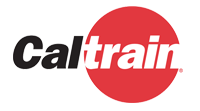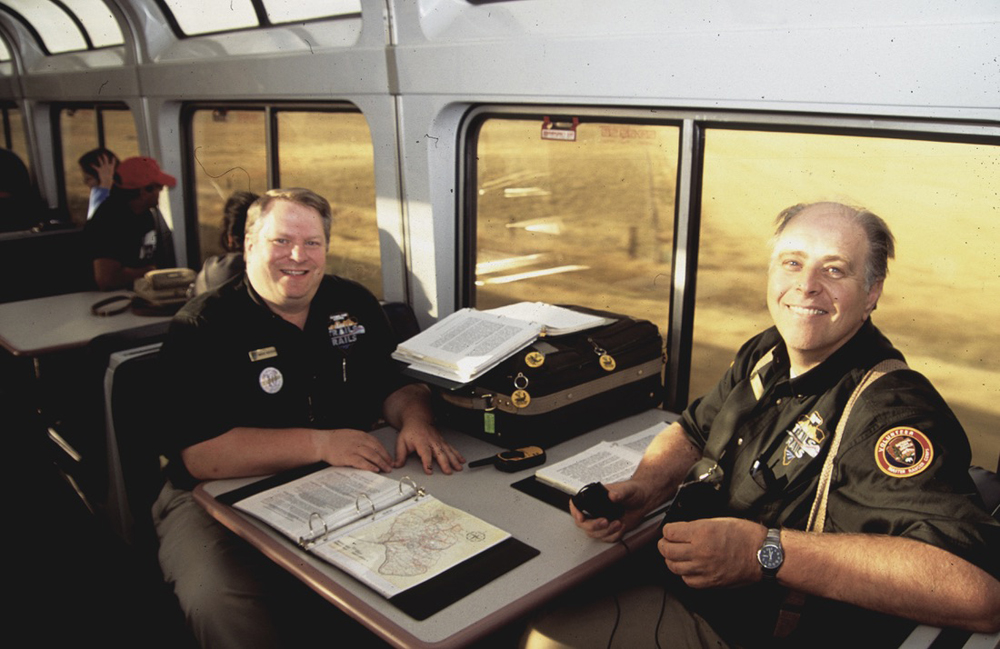The plan, which the Caltrain board will consider in August, is both a detailed documentation of exactly what kind of infrastructure is needed to achieve such a rapid expansion and a public argument for why the expenditure makes sense a year ahead of some kind of transportation tax measure being put on the ballot.
“This is one of those things where it’s not a study to put on a shelf,” Caltrain CEO Jim Hartnett said in an interview just before the release. “This is not a strategic plan. This is one where a real business case has been made for how and when we can make improvements that will take us to 2040 and continue to advance the economic vitality of the region and the quality of life.”
The growth rate anticipated in the plan is lower than what Caltrain has seen recently. It tripled its passenger load between 2003 and 2017 after adding Baby Bullet expresses, and it increased its farebox recovery from 30 percent to 63 percent. The plan calls for raising that recovery to 75 percent by 2040.
The plan calls for the middle of three possible levels of growth, although Hartnett said he doesn’t preclude an even greater increase later to the upper level of 207,000 passengers a day.
The middle level calls for as many as eight trains per hour in each direction during peak hours — one train every 7½ minutes — on the San Francisco-San Jose portion of the corridor and more trains at all other times, which now is as infrequent as hourly. Half the trains would be expresses.
Between San Jose and Gilroy, Calif., where service is weekdays-only with three northbounds in the morning to San Francisco and three southbounds in the evening, service would increase to seven days a week with three trains per hour in each direction during peak weekday hours.
On top of this service would be layered up to four high-speed trains per hour in each direction at peak times between San Francisco and San Jose and up to eight high-speed trains per hour from San Jose south.
“It becomes a system, then, in which you don’t worry much about the schedule as a passenger, because — particularly in the peak hours — you just show up and there’s going to be a train there pretty soon no matter what time you got there,” Hartnett said. “That’s the kind of service that is successful in all transit modes.”
All of that, the plan says, will require a new signal system, new maintenance and storage yards, longer station platforms raised to allow level boarding, additional four-track sections between San Francisco and San Jose, a new station in San Jose and elimination of most, if not all of the more than 50 grade crossings at an estimated $100 million each.
And it would require an electric railroad, shared with high-speed rail, all the way to Gilroy.
The northern part is being electrified now. About $2.5 billion from local, federal, state and high-speed rail funds is already in hand and being spent on the project to electrify the 47 miles between San Francisco and San Jose.
“Now there’s going to have to be a will to fund it,” Hartnett said. “That is the bottom line. That’s the core interest of the Caltrain as an entity. It’s a core interest for the region.”
Like Amtrak, Caltrain has no dedicated funding source. Although it recovers 64% of its operating costs at the farebox, it depends on about $22 million a year in voluntary contributions from the three counties it serves: San Francisco, San Mateo, and Santa Clara.
If high-speed rail can’t find funding to extend its Central Valley line — now under construction despite federal threats of grant “clawbacks” — to the Bay Area, then Caltrain will have to bear the full San Jose-Gilroy costs itself.
Two options are being considered outside the business plan. One is a sales tax referendum in the three counties that would raise about $100 million a year for the railroad. The second would be a cut from a much larger Bay Area-wide transportation measure, modeled on similar ballot successes in Seattle and Los Angeles, designed to raise $100 billion over the next few decades.
One of those is likely to be on the November 2020 ballot, said Seamus Murphy, Caltrain’s communications officer.
Hartnett said Caltrain has been critical to the success of Silicon Valley’s economy and the plan would more than pay back the money raised to fund it by even more economic activity. The plan estimates the improved service would produce $40.8 billion in economic impact on the Peninsula and would add between $25 billion and $37 billion in value to residential and commercial property within a mile of its 28 stations outside San Francisco.















One can only read the stories, sigh, and wish there was photographic evidence…
Anna, I wonder how many readers don’t actually read your post scripts/disclaimers. I find them very entertaining.
Paul, does the Party Car still exist?
Last time I rode Caltrain was the late 1980’s and it didn’t seem to be there. The train seemed to be filled with yuppie prep types, all in suits with briefcases and looking very happy to be there, as long as the supply of glycerine suppositories held out.
The above comments are general in nature and do not form the basis for an attorney/client relationship. They do not constitute legal advice. I am not your attorney. Find your own damn lawyer.
This one is too good to not pass on … hope it doesn’t just get buried, but someone actually reads it.
I don’t remember the occasion but there was a fair lesbian contingent in the Party Car and one night a bunch of them got together, fired up a boom box, and put on a full-on stripper show. Don’t suppose there is any statute against riding a train in a bikini (or functional, albeit flimsy, equivalent) … from what I saw they came right up to the line on that one … it was a very steamy ride, let me tell you.
And I used to hang out at Maud’s. But those stories are definitely best left untold.
“It was a famous victory. Kegs and legs open and on the house.”
Never been in a rolling strip joint before.
The Party Car …
The above comments are general in nature and do not form the basis for an attorney/client relationship. They do not constitute legal advice. I am not your attorney. Find your own damn ecdysiast.
ANNA – Flasher in California???? Then there was my circle trip around the Midwest and Northeast about forty years ago. Every train was late, broke down, hit a car, whatever. Oh, I was getting to the flashers. To understand this story, you must understand that Massachusetts isn’t Boston, it has its very rural woodlands and even close to Boston the terrain is so heavily forested that it seems isolated. Somewhere in western Massachusetts in broad daylight, two or three naked men alongside the track were flashing and gyrating their – oh, never mind, end of narrative.
I can assure you the exposure was quite decent – to quote the crowd at the time, and the chant, “Hubba, hubba.” An elderly gentleman on the top level (the cars had two levels with an open section in the middle), his eyes popped out like something in a cartoon, and someone else – I don’t remember who – made comments about “red snappers”.
Then there were the male belly dancers …
Oh, well…just another day on the bus. Don’t suppose you see much of this any more, not since things got respectable. But I remember when …
The Party Car …
The above comments are general in nature and do not form the basis for an attorney/client relationship. They do not constitute legal advice. I am not your attorney. Find your own damn ecdysiast.
No specific party car exists and smoking is verboten on the train and platform.
But partying (mostly drinking by far, but also with occasional cannabis vaping despite the smoking prohibition) seems to happen on occasion on any car. More on the weekend and post Giants game runs, but also on the later weeknight all stops runs. I’ve not seen any indecent exposure but wouldn’t be surprised if it did.
Who knows? I use this service because during rush hour I can get from my desk in Sunnyvale to 4th and King in SF in a little more than an hour using a Baby Bullet. Far better than I could do driving. But it takes much longer on the all stops return, so I give some of that back. Though electrification will help that some with better acceleration.
Caltrain is in the enviable position for a commuter line to have fairly good directional balance in the service at least between SF and SJ. I’m sure this helps fairbox recovery as much as the pain of driving in congested traffic (and then trying to park in SF or downtown SJ for that matter).
I can imagine the party car stories Anna but would still love to hear them.
The Party Car was the first half of the first car of the 5:26 northbound out of San Jose. It was, technically, the smoking section, but there was of course the question of precisely who was smoking precisely what … or so we are told. Besides, I never inhaled.
There was one woman on the train who kept flashing her (frontal mounted twin radar housings) at motorists at grade crossings.
Then there were the liquid refreshments …
The Party Car …
I have stories (best left untold) about the Party Car in the late ’70’s. Having said that, the Caltrain service is the next best thing to an interurban that I have ever encountered, and even at a 65 percent farebox recovery it easily pays for itself in terms of economic benefit to the areas it serves.
I will not be around to ride it, but it would be nice if it eventually extended south of Gilroy … how far south, it’s hard to say.
The above comments are general in nature and do not form the basis for an attorney/client relationship. They do not constitute legal advice. I am not your attorney. Find your own damn shyster.
40 years ago SP was trying to abandon the passenger service. On Friday nites the last train left 3rd & Townsend at 1230am. I was told that train was carried a collection who had …